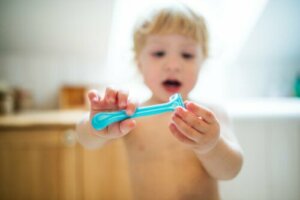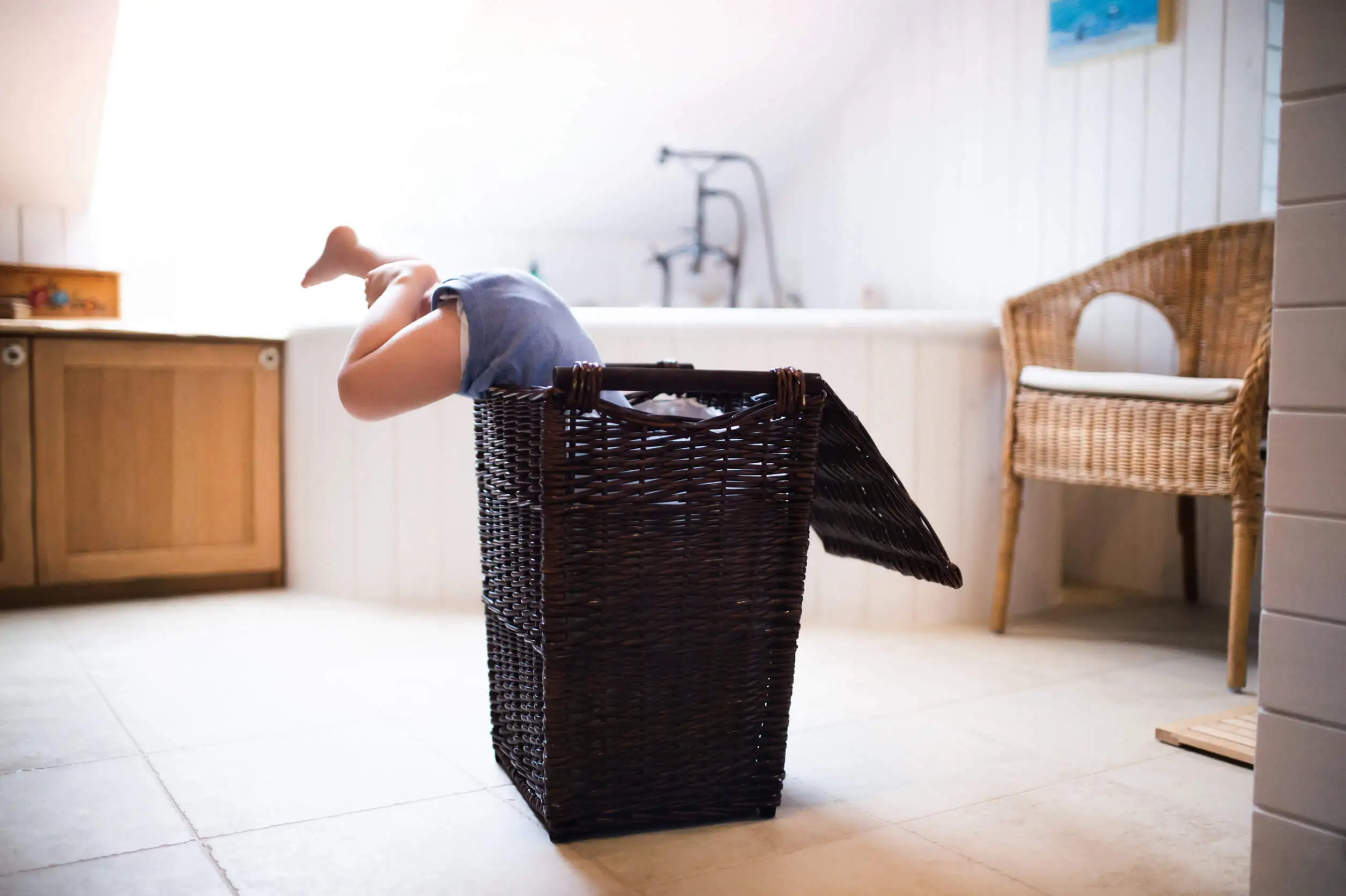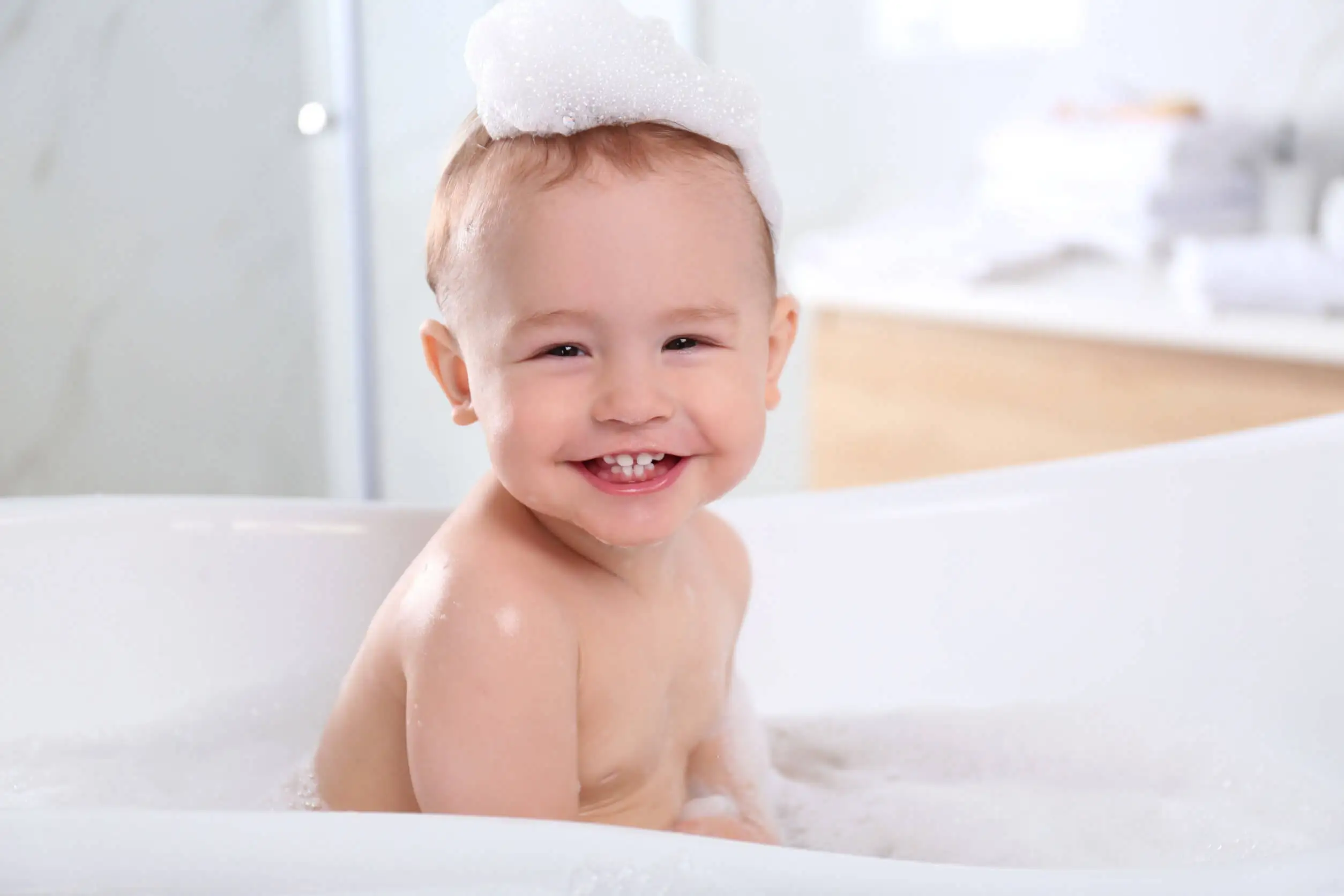7 Possible Risks for Babies and Children in a Bathroom

The risks for babies and children in a bathroom entail, among other consequences, injuries, slips, burns, intoxication, and drowning. The Spanish Association of Pediatrics mentions bathrooms as one of the potentially dangerous places in the home where unintentional injuries may occur.
In its prevention guide for parents, the institution indicates that this type of accident is, in the European Union, the leading cause of death in children between 5 and 18 years of age. Hence the relevance of adapting these rooms and not neglecting babies or older children while bathing or exploring the place out of curiosity.
Do you find this article interesting? We think you may also like to read: First Aid in Case of Accidental Finger Amputation
7 risks for babies and children in a bathroom

You can prevent some of the following domestic accidents in the bathroom by applying self-protection, safety, education, and, above all, adult supervision.
1. Slips
The CNSE Foundation for Overcoming Communication Barriers points out that trips in the bathroom correspond to the most common accidents at home.
Likewise, the Federation of Consumers and Users Association of Andalusia (FACUA) says that slips are the main cause of injuries during the shower as they mainly harm children, the elderly, and people with disabilities. To prevent them, they suggest:
- Put adherent mats or anti-slip patches in wet areas or areas exposed to splashes.
- Keep the floor dry.
- Ventilate the area.
- Install a grab bar on the shower or tub wall.
2. Drowning
Submerging in just 1 to 2 inches of water is enough for a baby to drown. A U.S. National Library of Medicine publication states that most drownings of children under one year of age occur in the bathtub and from lack of supervision.
Drowning is a quick and silent tragedy. In the case of babies, they can’t control their necks and muscles properly, so if their mouths and noses are covered by even a small amount of water, it’s impossible for them to breathe. You can prevent these events by emptying the bathtub and even lowering the toilet lid after use.
3. Electrocution
Electrocution is one of the risks for children in a bathroom. In its Insurance section, BBVA explains that, generally, in these rooms, there are hair dryers, shavers, and other electric appliances.
The proximity of electrical appliances with bathtubs full of water or a wet floor could trigger accidents. Never leave appliances plugged in, as a barefoot child on a wet floor risks electric shock.
4. Burns
The American Academy of Pediatrics recommends that water temperature should not exceed 120°F (49°C) for bathing a baby; otherwise, it causes burns.
The right thing to do is to regulate the degrees, install a thermometer or test the water with your elbow. Never put your child in the bathtub or under the shower without first making sure how hot the stream is. An extra tip is to turn on the cold water first and then gradually turn on the hot water.
5. Falls or contact with the toilet
Children in the toddler or stand-up phase may fall headfirst into the toilet. This is another reason for drowning. Keep in mind that the sound of flushing the lever and the flushing of the water makes the child take it as a game. Install latches on the toilet lids so they can’t open them.
In addition, the sink, toilet bowl, handles, and all bathroom fixtures accumulate germs. After touching these parts, babies can get skin problems or put their hands in their mouths and then get diarrheal diseases.
6. Wounds
Shavers, nail clippers, and scissors are all common bathroom tools. Keep these tools out of the reach of children to keep them free from injuries.
7. Ingestion of chemicals or medications
Even if you don’t keep cleaning products in the bathroom, other substances pose a potential ingestion hazard: shampoos, conditioners, medications, lotions, colognes, cosmetics, and even capsules that color toilet water.
In their innocence, children are attracted to the smell and color of chemicals, so they venture in for a taste. Prevent such accidents by blocking the drawers and the lid of the bowl.
We think you may also find this article interesting: How to Easily Clean Drains Without Chemicals
How to avoid risks for children in a bathroom

Locking the bathroom door is the best preventive measure against accidents involving children and babies. Also, staying with them while they bathe, instead of going in and out to answer calls, look for utensils, check the kitchen, etc.
Similarly, adapting the space favors that bathrooms are no longer the scene of accidents, says the National Association for Child Safety. How?
- Attach a pin to the toilet lid.
- Place an infant seat in the bowl. While helpful, when unsupervised, it’s still not a 100% safe device.
- Secures bathtub covers.
- Empty and store buckets in areas that children cannot reach.
- Keep the items you will use to sanitize the baby close at hand so you don’t leave the room to look for them, suggests the Fundación Infancia Segura (Safe Childhood Foundation).
The importance of being prepared in case of accidents with children in a restroom
The risks of children in bathrooms should motivate adults to be prepared to respond to any contingency. It’s essential to learn how to perform cardiopulmonary resuscitation (CPR), to record the number of the emergency service in telephone contacts, and to learn from a pediatrician what the first aid is in case of possible domestic emergencies.
All cited sources were thoroughly reviewed by our team to ensure their quality, reliability, currency, and validity. The bibliography of this article was considered reliable and of academic or scientific accuracy.
- Benítez MT. Principales accidentes por edades. Guía para padres sobre la prevención de lesiones no intencionadas en la edad infantil. Asociación Española de Pediatría. España; 2016. https://previnfad.aepap.org/monografia/accidentes-domesticos
- Casi ahogamiento. Biblioteca Nacional de Medicina. Estados Unidos; 2019. https://medlineplus.gov/spanish/ency/article/000046.htm
- ¿Cuáles son los accidentes más frecuentes en el baño? BBVA. México. https://www.bbva.mx/educacion-financiera/seguros/cuales-son-los-accidentes-mas-frecuentes-en-el-bano.html
- Dipesh Navsaria, FAAP, MD, MPH, MSLIS. Cómo bañar a su bebé. Academia Americana de Pediatría. Estados Unidos; 2020. https://www.healthychildren.org/Spanish/ages-stages/baby/bathing-skin-care/Paginas/bathing-your-newborn.aspx#:~:text=La%20American%20Academy%20of%20Pediatrics%20(AAP)%20recomienda%20que%20la%20temperatura,%C2%B0C)%20para%20evitar%20quemaduras.
- Ellena M. ¿Cómo prevenimos accidentes infantiles en el hogar? – El baño. Fundación Infancia Segura. Argentina; 2020. https://www.fundacioninfanciasegura.org/post/accidentes-infantiles-en-el-hogar-el-ba%C3%B1o
- ¿Por qué se producen los accidentes domésticos? Fundación CNSE para la Superación de Barreras de Comunicación. España. https://www.fundacioncnse.org/accidentesdomesticos/accidentes-domesticos.php
- Prevención de riesgos en el hogar. Facua. España. https://www.facua.org/es/guia.php?Id=43&capitulo=449
- Seguridad infantil en el baño. Asociación Nacional de Seguridad Infantil. España. https://seguridadinfantil.org/seguridad-infantil-para-familias/seguridad-infantil-en-el-hogar/seguridad-infantil-en-el-bano/
This text is provided for informational purposes only and does not replace consultation with a professional. If in doubt, consult your specialist.








